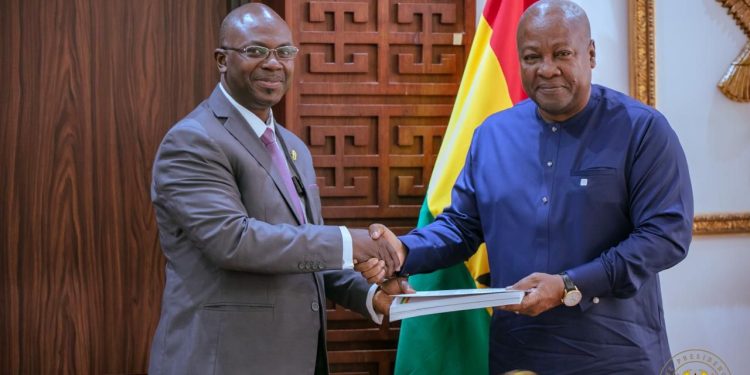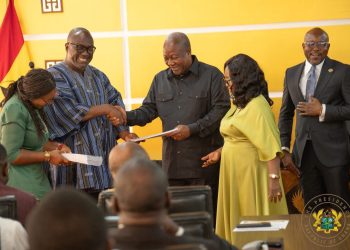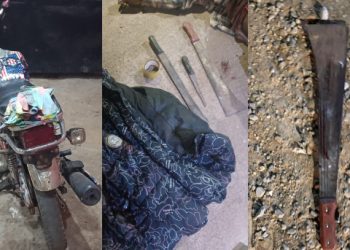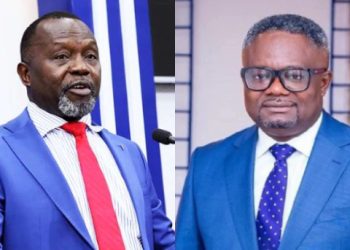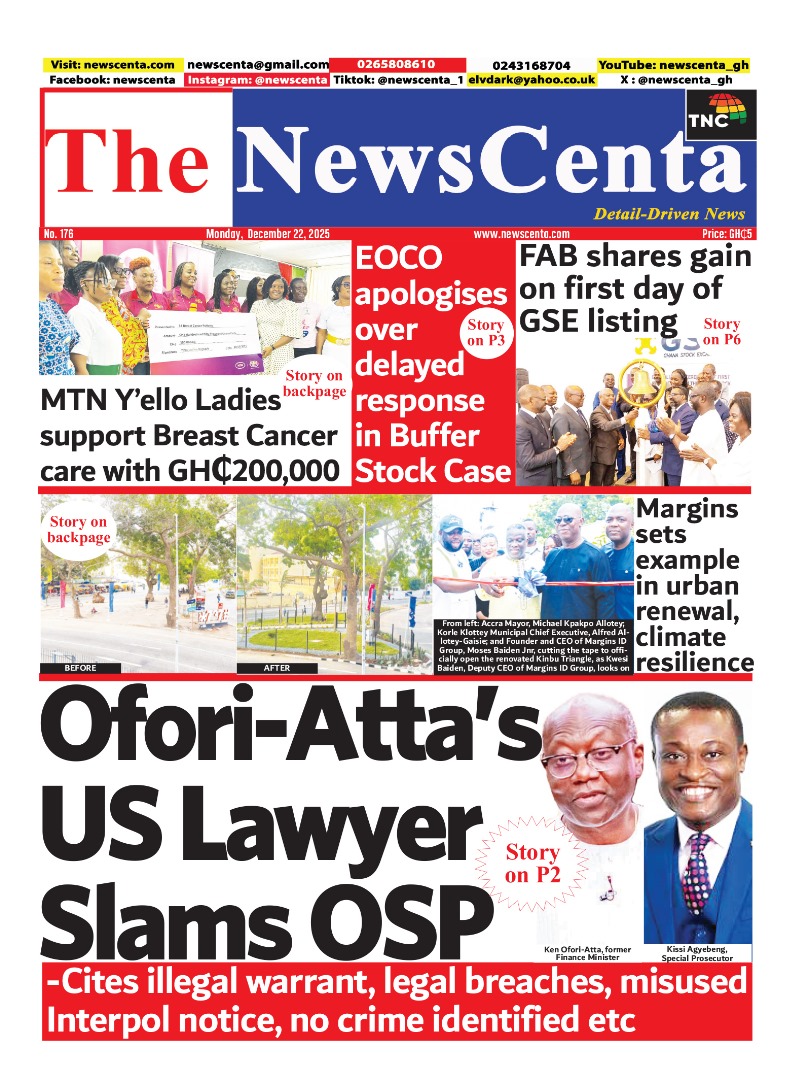President John Dramani Mahama has assured members of the Public Interest and Accountability Committee (PIAC) that oil revenues earmarked for his proposed $10 billion “Big Push” infrastructure initiative will be efficiently disbursed and managed.
The President gave the assurance during a courtesy call by the PIAC members. Led by its Chairman, Constantine K.M. Kudzedzi, the Committee members visited to congratulate the President on his recent election victory and discuss matters concerning the management of Ghana’s oil revenues.
President Mahama outlined his government’s ambitious plan to invest $10 billion over the next five years, allocating $2 billion annually, to priority infrastructure projects across the country.
These projects will target key sectors, including roads, major bridges, education, and health infrastructure, as well as areas vital for boosting productivity in the agriculture sector.
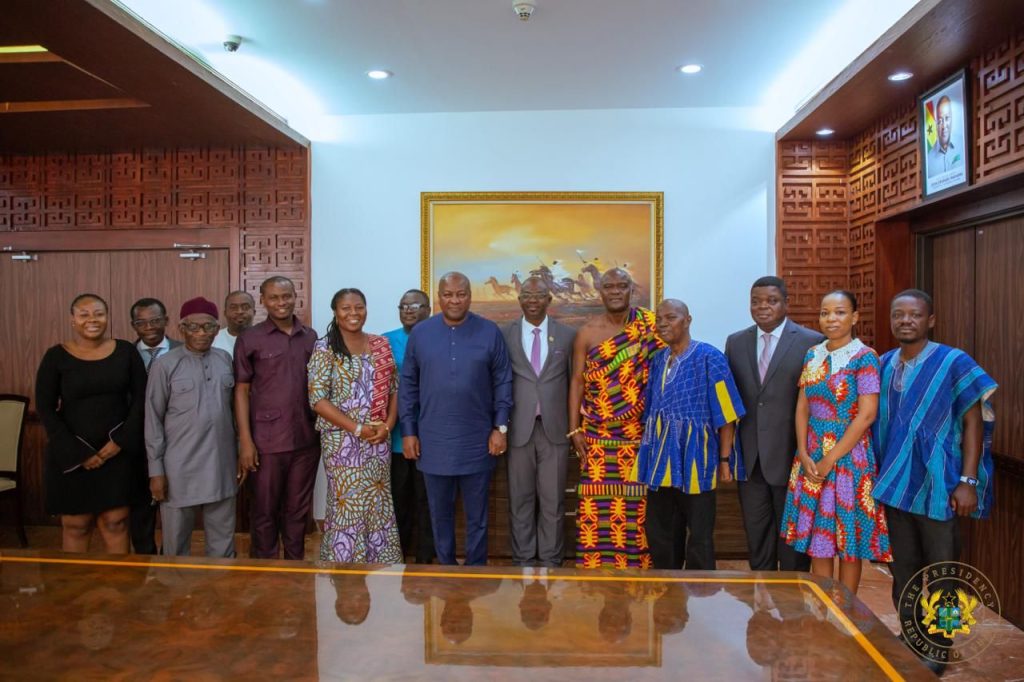
He specified that agricultural projects under the “Big Push” would encompass irrigation schemes, construction of farmer service centres, and support for agribusiness development.
The President stated that the primary sources of funding for this significant policy initiative would be petroleum revenue and minerals royalties.
Commending PIAC for its vital role, President Mahama praised the Committee’s efforts in monitoring and ensuring transparency and accountability in the utilisation of Ghana’s petroleum revenues.
He highlighted PIAC as a commendable model for other countries seeking effective oversight mechanisms.
Mahama’s ‘Big Push’ agenda
The ‘Big Push’ is for national infrastructure development to continue our legacy of massive infrastructure development to boost growth and create sustainable jobs.
In furtherance of the US$10 billion policy, Mahama aims to:
1. Embark on a US$10 billion accelerated infrastructural plan to drive job creation and prioritise the completion of uncompleted and abandoned government infrastructural projects across all sectors.
2. Revamp the Ghana Infrastructure Investment Fund (GIIF) to undertake strategic self-financing projects for jobs and national transformation.
3. Construct, rehabilitate and expand water supply systems to guarantee sustainable and equitable access to clean and safe water for all communities, including:
a. Ho and surrounding catchment areas, the Sogakope Trans-Boundary System and the Kpeve and Hohoe systems.
b. Tamale and surrounding catchment areas.
c. Yendi, Sang and surrounding catchment areas.
d. Savelugu, Pong-Tamale, Diare and surrounding areas
4. Sustainably address the perennial Bagre Dam spillage disaster.
5. Develop the Nasia, Nabogu and Pwalugu multi-purpose dams to support all-year-round agriculture.
6. Revamp the Western Corridor rail line in partnership with the private sector to transport bulk cargo and passengers by rail to the major towns along the Western Corridor and the port for shipment.
7. Reconstruct and upgrade the Eastern Corridor rail line to the nodal town of Kumasi and extend the two corridors to the north for freight and passenger services with the active participation of the private sector.
8. Provide inner-city light rail sub-urban services as an integral part of Kumasi and Takoradi’s western and eastern corridor lines.
9. Roll out an urban inner-city light rail system in Accra.
10. Develop a railway line from Sekondi-Takoradi in the Western region through Western North, Ashanti, Ahafo, Bono, Bono East, Savannah to Hamile in the Upper West Region.
11. The following major road corridors, Trunk roads, Feeder roads and Urban roads will be developed, improved or completed:
a. The three-carriage Golden Triangle; Accra/Tema-TakoradiTechiman (A-3T) highway.
b. Outer ring roads (Golden Orbital Motorways) in the following major cities to ease traffic flow:
i. Accra Orbital Motorway
ii. Kumasi Orbital Motorway
iii. Takoradi Orbital Motorway
iv. Tamale Orbital Motorway
v. Sunyani Orbital Motorway
vi. Techiman Orbital Motorway
c. Easter Corridor: Tema-Asikuma-Hohoe-Damanko-BimbillaYendi-Nakpanduri Kulungugu.
d. Western Corridor: Elubo- Enchi-Sunyani- Wa- Hamile.
e. Upper Corridor:
i. Pulmakom-Bawku- Bolga- Tumu – Wa.
ii. Tamale -Yendi.
iii. Tamale – Daboya – Busunu – Sawla – Chache.
iv. Sakoo- Nakpanduru – Bunkpurugu.
v. Yendi, Saboba, Waapuli, Cheriponi.
vi. Nkwanta-Kpaasaa.
f. Re-design and construct the following Inter-Regional Roads (IRR):
i. Aburi-Nsawam – Adeiso – Bawjiase – Agona Swedru – Mankessim
ii. Bunkpurugu – Nakpanduri – Walewale – Wiasi – Wa.
iii. Berekum – Sampa-Banda Ahenkro-New Longoro-KintampoPrang.
iv. Agogo – Dukusen – Anyinofi – Seneso – Atebubu.
v. Busunu-Daboya -Yagaba -Fumbisi -Sandema- Chuchuliga.
vi. Keta – Denu – Ho – Have – Kpando – Worawora – Dambai.
vii. Sefwi Wiawso – Yametwa – Nkrankwanta – Dormaaa Ahenkro.
viii. Charibouri – Bunbunu.
ix. Kumasi – Anwiankwanta – Cape Coast.
x. Asikuma – Anum – Dzemeni.
xi. Abakrampa-Asomdwe road

